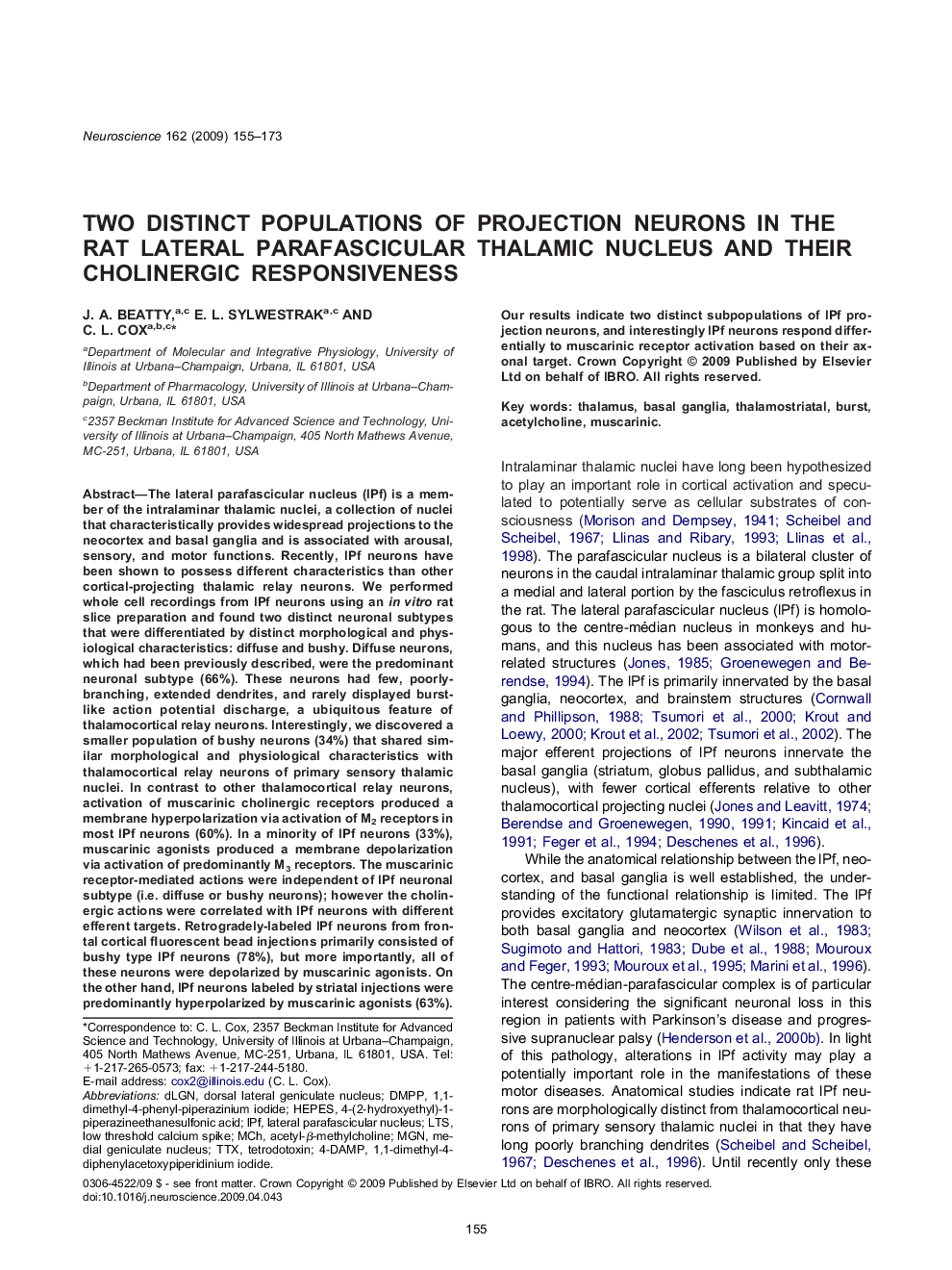| Article ID | Journal | Published Year | Pages | File Type |
|---|---|---|---|---|
| 4340377 | Neuroscience | 2009 | 19 Pages |
The lateral parafascicular nucleus (lPf) is a member of the intralaminar thalamic nuclei, a collection of nuclei that characteristically provides widespread projections to the neocortex and basal ganglia and is associated with arousal, sensory, and motor functions. Recently, lPf neurons have been shown to possess different characteristics than other cortical-projecting thalamic relay neurons. We performed whole cell recordings from lPf neurons using an in vitro rat slice preparation and found two distinct neuronal subtypes that were differentiated by distinct morphological and physiological characteristics: diffuse and bushy. Diffuse neurons, which had been previously described, were the predominant neuronal subtype (66%). These neurons had few, poorly-branching, extended dendrites, and rarely displayed burst-like action potential discharge, a ubiquitous feature of thalamocortical relay neurons. Interestingly, we discovered a smaller population of bushy neurons (34%) that shared similar morphological and physiological characteristics with thalamocortical relay neurons of primary sensory thalamic nuclei. In contrast to other thalamocortical relay neurons, activation of muscarinic cholinergic receptors produced a membrane hyperpolarization via activation of M2 receptors in most lPf neurons (60%). In a minority of lPf neurons (33%), muscarinic agonists produced a membrane depolarization via activation of predominantly M3 receptors. The muscarinic receptor-mediated actions were independent of lPf neuronal subtype (i.e. diffuse or bushy neurons); however the cholinergic actions were correlated with lPf neurons with different efferent targets. Retrogradely-labeled lPf neurons from frontal cortical fluorescent bead injections primarily consisted of bushy type lPf neurons (78%), but more importantly, all of these neurons were depolarized by muscarinic agonists. On the other hand, lPf neurons labeled by striatal injections were predominantly hyperpolarized by muscarinic agonists (63%). Our results indicate two distinct subpopulations of lPf projection neurons, and interestingly lPf neurons respond differentially to muscarinic receptor activation based on their axonal target.
